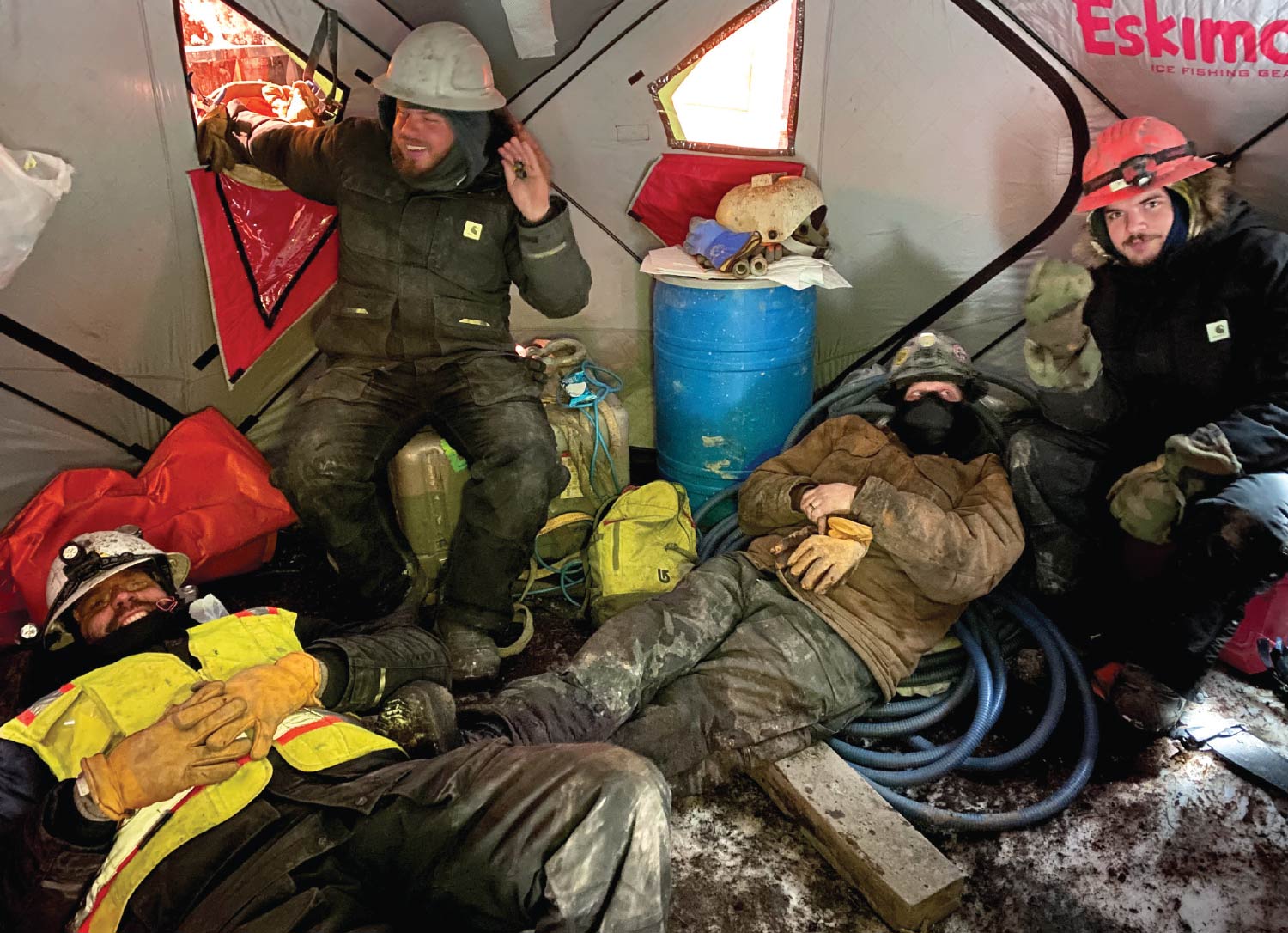
on’t underestimate a small crew leaving a large footprint. According to the US Small Business Administration’s 2024 profile for Alaska, of the 75,980 employers with fewer than 499 workers on staff (the agency’s definition of “small”), 2,349 were construction companies with fewer than 20 employees. No other industry in Alaska has so many businesses in that size category, amounting to one-third of all construction companies counted; most of the other two-thirds are owner-operators without any employees at all. In the building trades, those small shops can have a lasting impact.
“Our expertise is in design-builds,” Amie Greer explains. “We typically get a simple sketch or idea from a client and then develop it from there. We work in coordination with a team of independent architects and engineers. We develop construction plans based on the client’s needs and budget as a team.”
Husband and wife work onsite during the construction phase to maintain a high level of control over all aspects of the project from start to finish. “It is not unusual to see Matt with a shovel or me on a tag line laying out trusses,” she adds. “This approach has ensured the project stays on schedule, within budget, and safe. This has been highly successful, with an average of less than two change orders on a million-plus complex jobs and excellent communications from all trades and crews.”
At ACDG, the key to larger projects is organization, which leads to clear communication. For example, the Bering Air Hangar project at the Nome Airport benefited from this approach.
The couple spent time visualizing and discussing how the 30,000-square-foot structure would develop, working on value engineering and problem-solving issues with their design team, subcontractors, and suppliers. One challenge was creating a design encompassing a 120-foot-wide by 28-foot-high custom sliding door system that could withstand Nome’s extreme high-speed winds.
Cole Sullivan
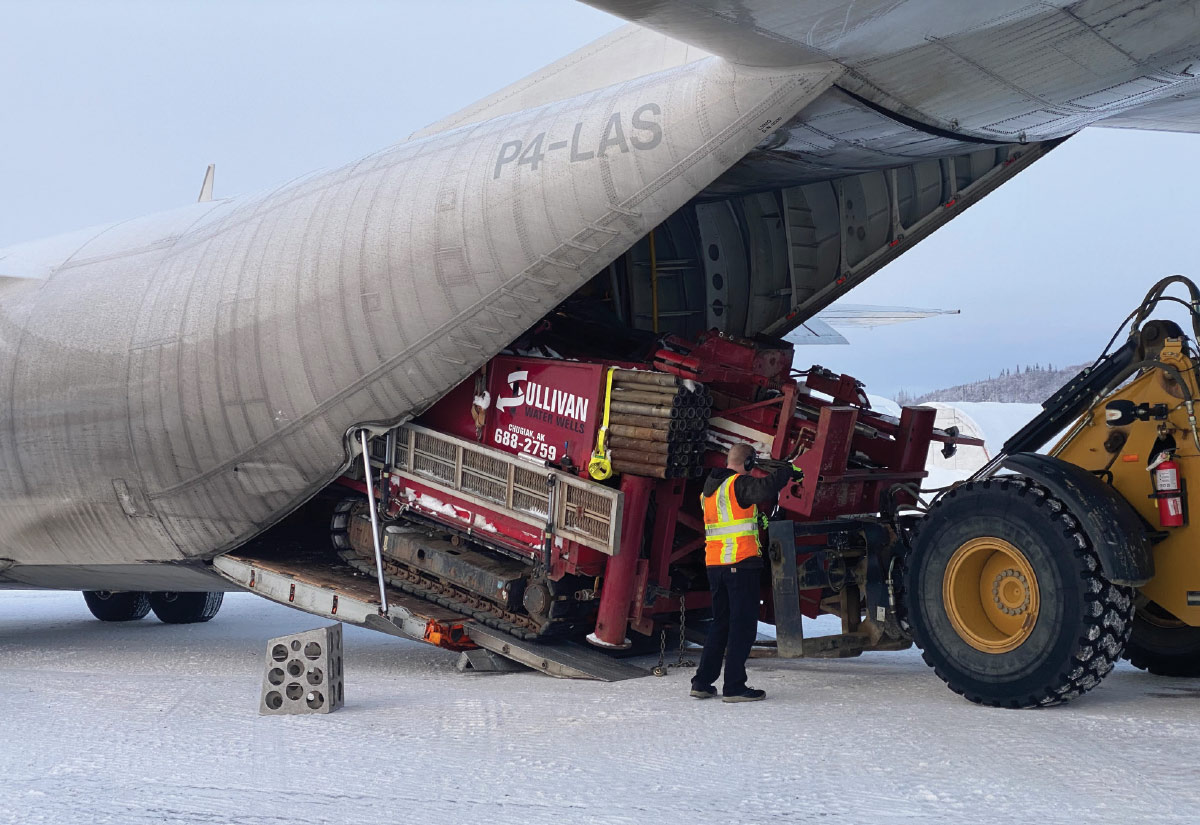
“We gained so much knowledge and feel honored to have had the opportunity to complete such a large project with a small crew,” Greer adds.
Greer says depending on small local companies is also beneficial: “This is a demanding environment with many challenges, and it takes teams of people backing small crews to make a large project come to light.”
An upcoming extensive demolition project holds a special place in Greer’s heart.
“There’s an old blue airplane hangar at the Nome airport where Wien Airlines used to operate,” she explains. “My grandpa, Fred Richards, was one of Wien’s senior pilots and has told us stories about flying around Nome. I think about the history—and the future—of the space. It’s a full circle with construction in Alaska.”
Matt Greer
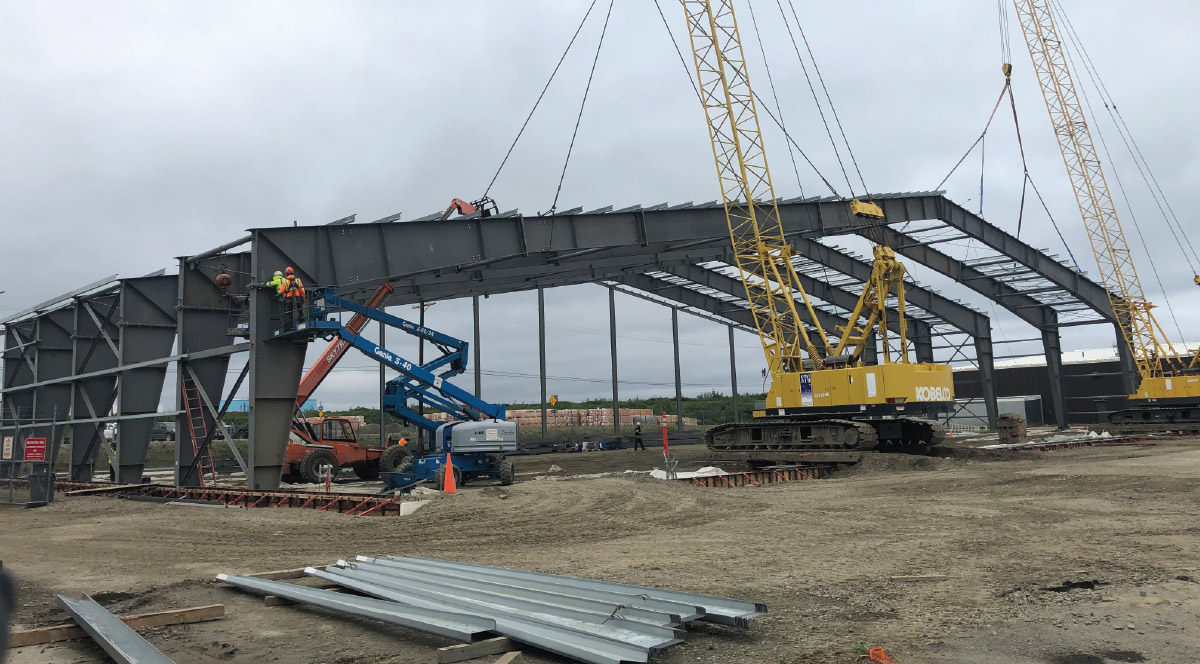
“Our main focus since the beginning has been residential water wells and light commercial, such as grounding wells and piling,” says Cole Sullivan, now the company president.
It’s spiraled out from there. “In 2010 we brought pump system installation and service in-house. In 2014 we expanded into heavier commercial drilling, including oil field and mining support. In a few short years, we went from one rig to six,” Sullivan says. In 2022, the company purchased a Foremost DR-40—one of approximately a dozen in the world—capable of rotating 40-inch diameter casing.
Based in Chugiak, the company also covers the Yukon-Kuskokwim region from its branch location in Bethel. “We work all over the state; anywhere we can fly, drive, or float a rig or pump truck,” he says.
“Drilling is a field where almost every job has a new and unique set of challenges,” says Sullivan. “Alaska’s geology is random, and what may work well in one area may not work at all on the next. Boulders are the most obvious challenges that drillers or pile drivers encounter.”
The Chugiak/Eagle River area where the company does much of its work is known for large deposits of boulders. “We carried dynamite everywhere we went, as blasting our way through boulders was imminent. It’s a skill that eventually died out after September 11 and getting explosives was more difficult,” he explains.
Jerry Manley | Loken Crane Rigging & Transport
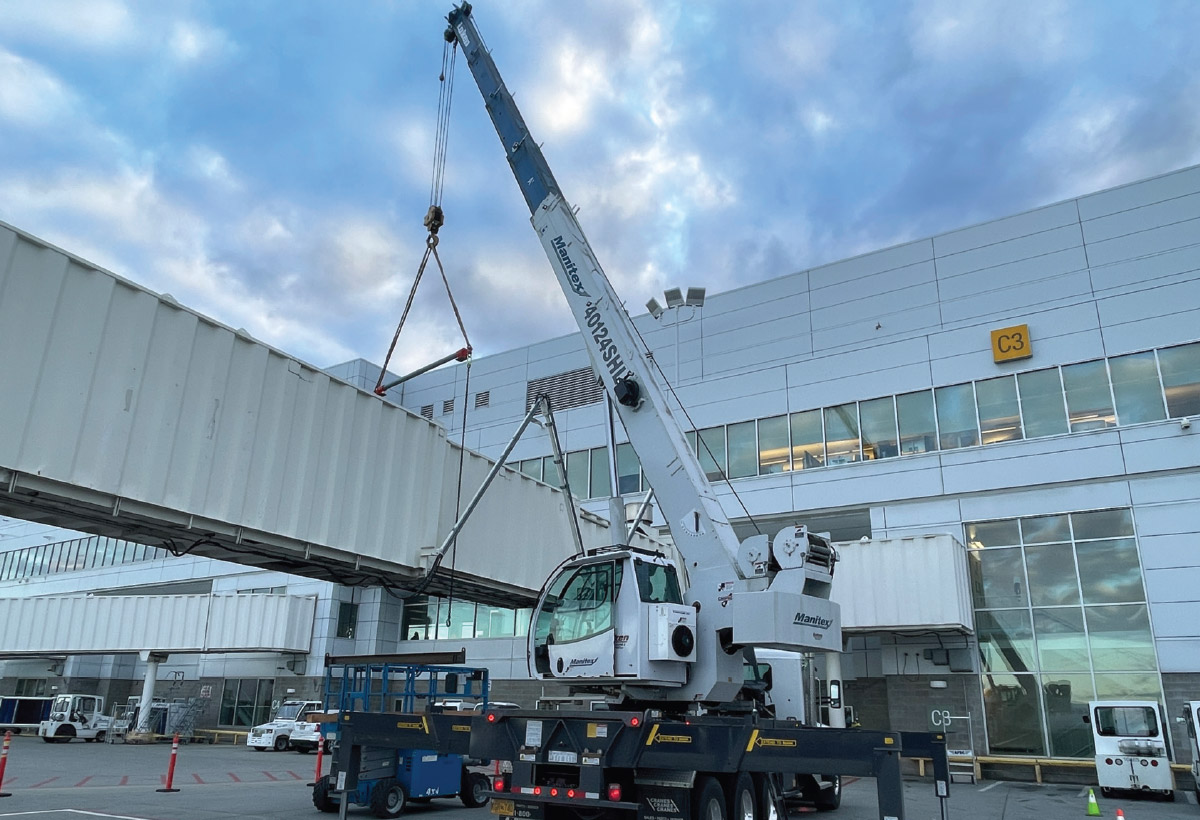
Of his eight-person crew, Sullivan says, “Over the years, we have adapted to every scenario we have encountered, but we still find ourselves learning how to overcome the next new challenge.”
Logistics are a major undertaking with large, specialized equipment, Sullivan notes. “We get our rigs where they probably shouldn’t go at times and probably shouldn’t be there. In short, if someone doesn’t want a job or can’t complete it for whatever reason, we are willing to put our team on it.”
Sullivan approaches the multitude of daunting projects by focusing heavily on best management practices with a zero-failure attitude, beginning with the absolute best plan first.
“We have had jobs with a 24-hour schedule in subzero temperatures—some for months without stopping—with helicopters bringing us and material to remote sites,” he recalls. “We completed five wells in Interior Alaska that started out at 40-inch diameter. The material was a man-made ‘mountain’ of granite blast rock up to 8 feet in diameter and depths to nearly 200 feet. There was a steep learning curve, but we made constant adjustments and went from one month per well (24 hours a day), to just five days, making up all the time we lost.”
Sullivan says proper planning and being able to think on your feet is critical. He observes, “Forgetting one simple thing or a major breakdown can cause huge delays if you are not prepared with backups or the ability to work around the problem.”
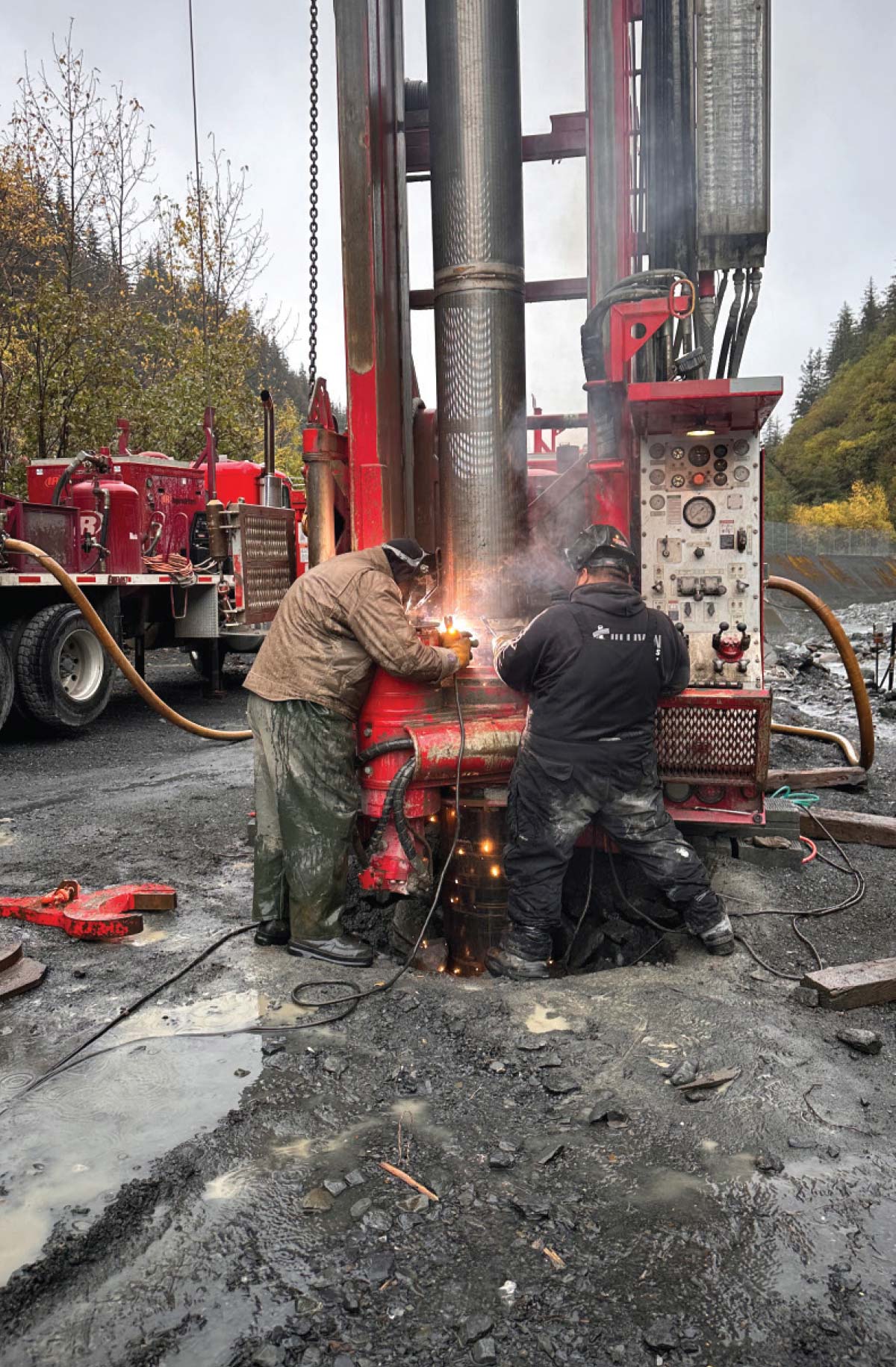
Cole Sullivan
He also believes having a healthy relationship with similar companies and the willingness to collaborate is important. Sullivan says, “A big part of our success comes from some of our competitors. We are able to assist with specialized aspects of bigger projects or take over a project that has some unforeseen conditions. We do the job, move down the road, and everyone is happy, and we always reciprocate whenever possible.”
“In 2014, we expanded into our own entity—Loken Crane Rigging & Transport—and now have four new and late model cranes and employ seven of the best people in the world,” says company manager Tyler Loken.
Loken grew up in the Midwest, working with tractors and equipment on family ranches and his father’s construction business. That experience led to the company’s creation in Alaska. “I knew we could build things safer, better, and faster with cranes and serve other’s crane needs as well. Our construction side and their team really help the crane side with work,” Loken says.
The company’s stack of challenging projects is extensive. “Many times on our construction projects, they will swing ninety-plus picks a day,” says Loken, referring to a crane picking up a load. “Most crane companies swing one or two picks a day. Ninety picks in a day is a lot of precision and experience.”
One exceptional project stands out, even though it occurred twelve years ago. Loken’s crew was tasked with gently removing a 25-foot, ancient Native skin whaling boat from the Anchorage Museum and transporting it to another exhibit location. Moving a piece of history and making sure to preserve it took a lot of caution, communication, and courage, Loken says. All rigging needed to be custom designed not to damage the precious cargo.
Loken credits his operators: they take challenging, complex rigging and charts and make it happen, from lifting a $500 truss to a priceless Native artifact.
“Consideration for what makes a project big or small is up for debate,” says Loken. “Moreover, it’s the next hurdle; the next mountain and how we approach that—can-do or can’t-do. I’m very humbled and honored to get to work with a lot of ‘can-doers.’”
His approach to difficult projects: “A lot of can-do thinking and doing; set the vision and the pace; express gratitude at the end; and serve in between.”